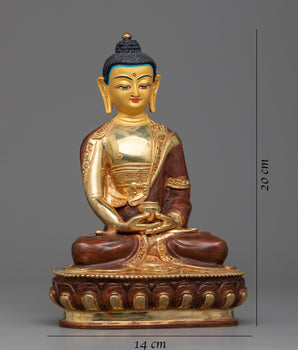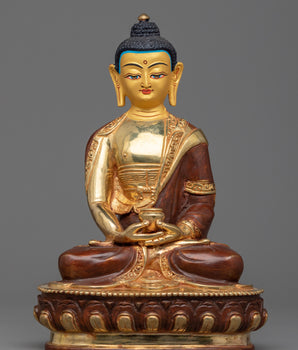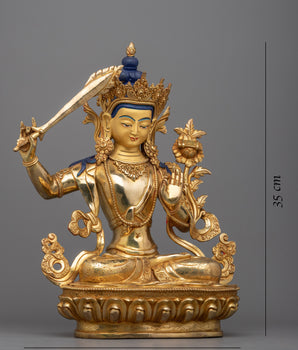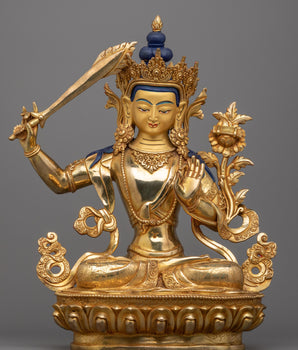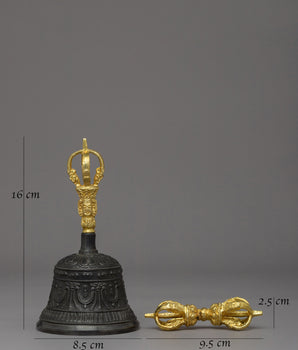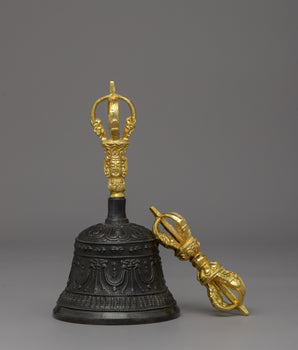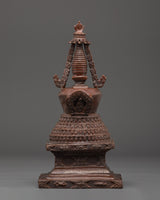
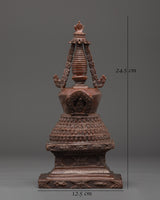
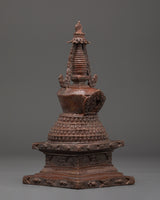
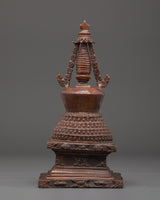
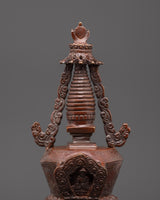
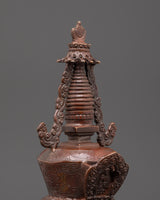
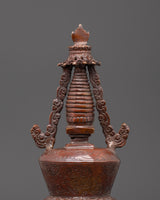
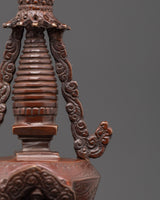
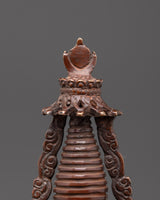
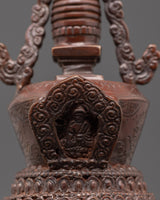
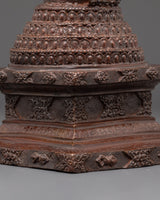
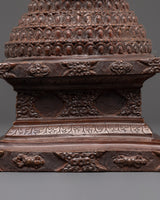
Buddhis Oxidized Stupa | Spiritual Shrine Decor
Tibetan Buddhist Oxidized Stupa | Symbol of Peace
-----------------------------------------
Size: 24.5cm (Height) x 12.5cm (Width)
Weight: 1.65kg
Materials: Oxidized Copper
------------------------------------------
About Our Ritual Item :
The Buddhist Oxidized Stupa is a sacred Tibetan shrine symbolizing enlightenment, compassion, and spiritual awakening. This finely crafted statue embodies the Buddha’s enlightened mind, serving as a powerful source of peace, healing, and protection. Ideal for altars, meditation rooms, or any sacred space, it radiates calming energy that supports your spiritual journey. Standing 24.5 cm high and 12.5 cm wide, with a substantial weight of 1.65 kg, this stupa offers a meaningful and stable centerpiece for your practice. Bring tranquility and divine blessings into your environment with this spiritual treasure.
Crafted from oxidized copper, this healing stupa features intricate details inspired by the artistry of the Himalayas and profound devotion. In Buddhist tradition, stupas serve as more than decorative objects they are powerful, energetic symbols designed to harmonize your surroundings, soothe the mind, and encourage profound inner transformation. Placing this stupa in your meditation space or altar invites a calm, sacred presence that enhances focus and spiritual connection. Its timeless design also makes it a thoughtful and meaningful gift for anyone seeking peace and enlightenment. Elevate your spiritual practice and environment with this exquisite shrine that embodies tranquility and sacredness.
Introduction To Stupa :
Before Buddhism, great teachers were buried in mounds. Some were cremated, but sometimes they were buried in a seated, meditative position. The mound of earth covered them up. Thus, the domed shape of the stupa came to represent a person seated in meditation, much as the Buddha was when he achieved Enlightenment and knowledge of the Four Noble Truths. The base of the stupa represents his crossed legs as he sat in a meditative pose. The middle portion is the Buddha’s body, and the top of the mound, where a pole rises from the apex surrounded by a small fence, represents his head. Before images of the human Buddha were created, reliefs often depicted practitioners demonstrating devotion to a stupa.
How to set up your own Buddhist Shrine?
• Find a clean, quiet, and uncluttered spot
• Set up an altar table, and cover it with an altar cloth that calls to you
• Place your sacred item at the center
• If you want a more elaborate altar, you can put a Stupa as well.
















